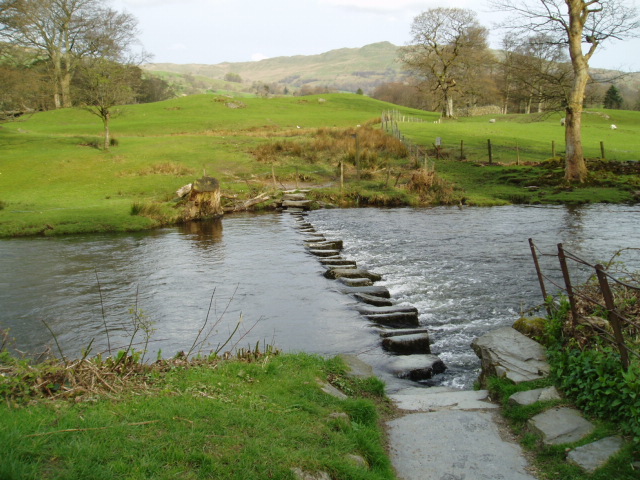River Rothay on:
[Wikipedia]
[Google]
[Amazon]
 The Rothay is a
The Rothay is a
 The Rothay is a
The Rothay is a spate river
Spate is a surname, and may refer to:
* Clive Spate (born 1952), British game show contestant
* Oskar Spate (1911–2000), geographer
* Virginia Spate (1937–2022), Australian art historian
* Ute Späte (born 1961), German chess master
Spate ...
of the Lake District
The Lake District, also known as the Lakes or Lakeland, is a mountainous region in North West England. A popular holiday destination, it is famous for its lakes, forests, and mountains (or ''fells''), and its associations with William Wordswor ...
in north-west England. Its name comes from Old Norse and translates literally as ''the red one''. This has come to mean ''trout river''. It rises close to Rough Crag
High Street is a fell in the English Lake District. At 828 metres (2,718 ft), its summit is the highest point in the far eastern part of the national park. The fell is named after the Roman road which ran over the summit.
History R ...
above Dunmail Raise at a point about 1542 feet (470 m) above sea level (). Its catchment area covers Grasmere Common including Easedale Tarn
Easedale Tarn is a tarn in the centre of the English Lake District, about two miles west of the village of Grasmere. It lies in a hollow between Tarn Crag to the north and Blea Rigg to the south, about 910 feet or 280 metres above sea level. ...
, the southern flanks of Fairfield, and several of the fells to the east of Dunmail Raise, including Great Rigg, Rydal Fell, Scandale Fell and Heron Pike.
From its source the Rothay descends through the valley of Greenburn Bottom to the hamlet of Helmside not far from the main A591 road over Dunmail Raise. Just north of the village of Grasmere the river subsumes Easedale Gill and Sour Milk Gill, the latter flowing out of Easedale Tarn. In the village the river flows close to the churchyard where the poet Wordsworth is buried. The Rothay then flows into the head of the lake of Grasmere (elevation 208 feet/63 m). As well as replenishing Grasmere, the Rothay also drains it, flowing for just half a mile (800 m) from the southern end of the lake before replenishing Rydal Water (elevation 181 feet/55 m) at its western extremity. The Rothay drains Rydal from its easternmost point and then flows in a general southerly direction for about three miles (4.8 km) before merging with the River Brathay at Croft Lodge south-west of Ambleside. From there the rivers flow into the northern end of Windermere. In addition to those tributaries already noted, several others are subsumed by the Rothay.
About a mile (1.6 km) north of Ambleside the Rothay is crossed by a well-known set of stepping stones. Several sections of the Rothay are popular with canoeists, including the section between Grasmere and Rydal; the river is graded as 2+. The Rothay is a trout fishery where brown trout
The brown trout (''Salmo trutta'') is a European species of salmonid fish that has been widely introduced into suitable environments globally. It includes purely freshwater populations, referred to as the riverine ecotype, ''Salmo trutta'' morph ...
can be caught. Anglers should enquire locally about licences (an Environment Agency Rod Licence is required).
The River Rothay was wholly within the historic county of Westmorland
Westmorland (, formerly also spelt ''Westmoreland'';R. Wilkinson The British Isles, Sheet The British IslesVision of Britain/ref> is a historic county in North West England spanning the southern Lake District and the northern Dales. It had an ...
. Since local government reorganisation in 1974 the river has been in the county of Cumbria.
See also
* Cunsey Beck * River Leven * Trout Beck {{authority control Rivers of Cumbria 1Rothay